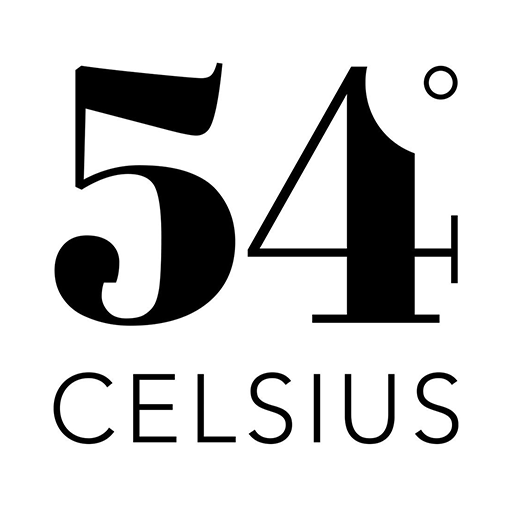Meet Sophy Hollington, the Artist and Illustrator behind our Tarot Candles

Meet Sophy Hollington, the Artist and Illustrator behind our Tarot Candles
We at 54Celsius are proud to work with emerging designers, artists, and craftspeople from around the world to bring you products that are not just candles, but wax works of art — and we to make sure their stories get told. That’s why we have sat down with each of our collaborators to have a dialogue with the creative minds behind the candles.
For this installation, we were lucky enough to have a chat with artist and illustrator Sophy Hollington, whose eye-catching linocut designs adorn our Tarot Candles. Here we discuss her process and passions as an artist, the inspirations behind her work, and how her dreams of creating a deck of tarot cards became a reality.
54 Celsius: Let’s start with an introduction, shall we? Mind telling us a little more about you?
Sure! I live in Brighton, in the United Kingdom. I’ve been based here for about 4 years, and before that I lived in London. I share a studio here with about seven other illustrators and artists. In terms of what I do, I’ve studied illustration and I guess I would call myself an illustrator, but I am also an artist and a print maker.
54 Celsius: How did you get into illustration? Where did it all begin?
It’s going to sound sort of cliché, but it’s something I’ve always wanted to do. I’ve always wanted to be an artist of some kind, and I found myself drawn to printed art. That trajectory started becoming focused at school — I studied at Camberwell College in South London — where I was able to study illustration rather than graphic design or something more broad.

54 Celsius: Can you tell us more about your art? How do you make your illustrations?
Much of my style has to do with how I make my work, which is linocut printing. Do you know how that works? Well, the lino is the material, and you cut into it to make your designs. What you cut away becomes the white space of the print. And what’s left after you’ve carved your image away, that’s what you put the ink on and what’s printed.
I always print in black on white paper, and that black is always what ends up being the main meat and potatoes of my work. I color the image afterwards. I wouldn’t call the color an afterthought, but it’s not the main narrative, I guess. So I find myself using a few, usually no more than five, bold colors to highlight the black.
54 Celsius: What usually inspires your prints?
I often look into literature. For instance, I have been looking through old manuscripts as part of this new publishing project that I’ve been working on. And recently, I’ve also been looking at a lot of French Renaissance work, honing in on the characters and looking at the sensibilities of these paintings. There’s something there that feels very fresh and contemporary when you take it out of that context.
But in general, I do try to keep my sources as broad as possible, as I feel like that makes the most interesting work. I feel like maybe that is my power: to look in strange places for inspiration, and not change who I am for the job or go along with trends. I really try and steer clear of looking too much at what’s going on right now. Because what you see does have a way of permeating what you’re doing. I keep an eye on it, of course, but I try and keep it at a distance and rather look to the world around me for inspiration.

54 Celsius: How about the tarot designs? Can you tell us what inspired you to first create those?
In 2018, Rough Trade Publishing, which is an offshoot of the quite famous indie record label, contacted me about making the tarot deck. They were working with a writer called David Keenan. He’d written this experimental pamphlet of sorts called To Run Wild In It, and every chapter in the pamphlet had a heading that was a name of a tarot card. So we teamed up and made it into an actual tarot deck.
The funny thing is, I’d already wanted to design a tarot deck. Even though the pamphlet was a project that David had already created and it was Rough Trade’s idea for us to work together, it was something that I had planned to do for years. And then this guy had written this book and it just happened. It was really just perfect timing.
54 Celsius: Oh interesting. Were you into tarot prior to designing the deck?
Not in a sort of spiritual sense. (Laughs.) But I’ve always loved the imagery, and I’ve been drawn to the symbolism and the esoteric as an art form. I can’t read tarot, which is the irony. But David can, and he’s really good at it. It was all of his writing that definitely informed the content of the cards.
54 Celsius: From there, how did the tarot deck become the Tarot Candles?
Basically, 54 Celsius approached me to work together. And I really liked the idea of the tarot cards on votive candles — I thought that format would work really well for the prints. After I agreed, we just ran with it.
54 Celsius: What’s next? Are there any new projects that you’re working on and very excited about?
I’m doing a lot of commercial work right now. I also have another big publishing project coming up that’s got a similar look to the tarot deck, and I’m working with some brands as well. And then there’s a bit of editorial illustration. I’m lucky — I’m able work on lots of different things. Sadly, as is often the case, there’s not much that I can actually chat about in detail right now.
Projects like the tarot deck, though, they’re my favorite. They simply resonate with people in a way that a lot of the editorial and fashion stuff doesn’t. So I find that even now, three years later, I’m still thinking about the tarot cards in a way that I’m not with my other work.


